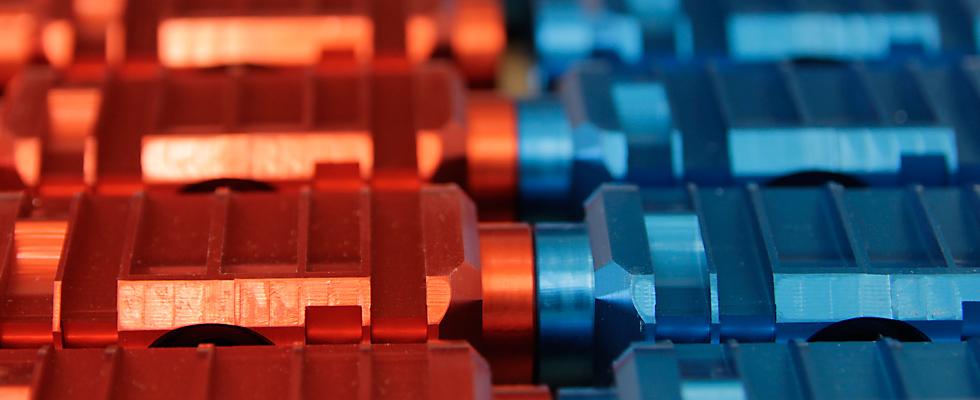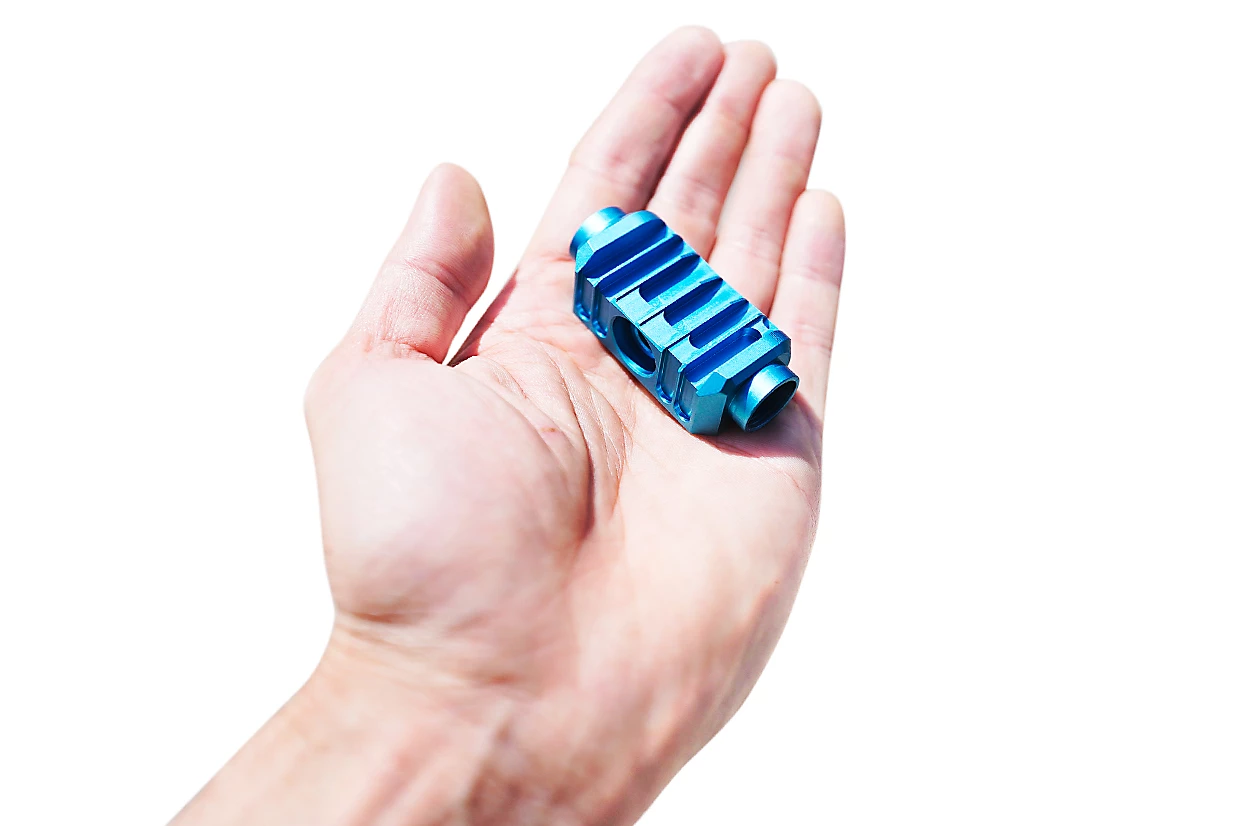Lightweight CNC milled aluminium bodies
The bodies of all our Lucifer headlamps are CNC milled from aluminium alloy. There are several good reasons for this, these are:
- High mechanical strength and durability of the headlamp
- excellent heat dissipation
- higher efficiency and LED lifetime
- higher reliability of the electronics
- headlamp bodies look good


Great heat dissipation
Even the most efficient LED today generates heat when illuminated (about 40-60% of the wattage). In addition, the more you shine (higher headlamp modes), the more heat it generates, the efficiency of the LED is lower with increasing current. In headlamps up to 200-300 lumens there is no need to worry about cooling so much, the plastic body of the headlamp can somehow dissipate it.
Higher light outputs require better cooling, otherwise the headlamp would overheat on the spot (burning on contact), the LEDs would have a reduced lifetime (drop in intensity over years of use) and the electronics would be more prone to failure.
For headlamps with thousands of lumens, good cooling is literally a necessity and a prerequisite, no such headlamp can function well without it. Heat has to be transferred quickly from the LEDs to the outer aluminium body of the headlamp, which radiates the heat to the surroundings.

How are aluminium headlamp bodies made?
The two basic manufacturing processes are milling and turning. Turning is much faster in terms of time, but the headlamp body is then limited by its circular shape. The cost of production is one of the two reasons why all Chinese headlamps have a circular shape. But the cooling fins are poorly oriented (not in the direction of airflow), so that also limits cooling at low speeds (walking, slow running). Downstream fins are preferable, but they are not manufacturable by turning.

Milling is a more time-consuming operation, but brings absolute freedom in body design and ribbing. We take full advantage of this in our headlamps, which have extreme ribbing for their weight, being able to hold power in place where other (and the world's) lights fail. At the same time, the weight and dimensions are absolutely minimal. This is also why our headlamps can never cost as much as Chinese or plastic headlamps. One body is 3 aluminum parts and is milled from 5 sides and depending on the specific headlamp model it takes about 0:45h to 1:15h. That's the net production time, followed by cleaning (deburring) and unifying the surface by plastering.
The last operation is the galvanic anodic oxidation of the surface, called anodizing, which produces an aluminium oxide layer 10-100 microns (thousandths of a millimeter) thick on the surface. This has a very high corundum hardness and provides mechanical resistance, wear resistance, rust resistance and permanence. This can be produced by several Czech electroplaters and the surface can be dyed to any colour.

Beware of plastics!
Manufacturers often replace metal with plastic on lower end headlamp models, but one that looks quite believable. Even online stores are often confused and say that the headlamp is aluminium, when it is clearly a plastic moulding. Just tap the body with your finger, aluminium is harder and rings, whereas plastic is pliable (can be bent). The difference in use is extreme! There are really few full aluminium headlamps on the market today, you usually can't buy one in regular outdoor stores.